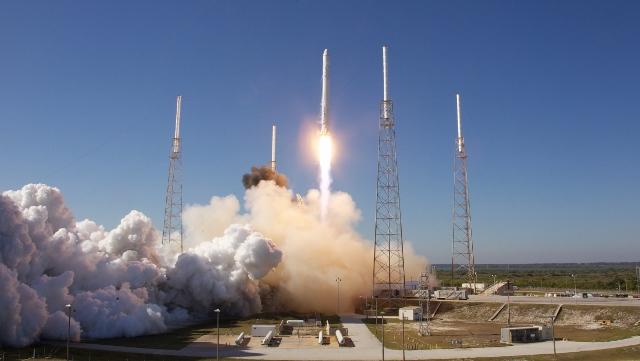SpaceX Attempts to Land Rocket
January 12, 2015
Space Exploration Technologies, or SpaceX, is attempting to make history. SpaceX is one of the most successful private space transport companies. Founded by billionaire entrepreneur and inventor Elon Musk, SpaceX has flown private satellites into space and gained a 1.6 billion dollar contract from NASA to take supplies to the International Space Station (ISS). The eventual goal of SpaceX and is to travel to and colonize Mars. To do this, they are attempting to drive down the cost of rockets in order to make colonization economically feasible.
Musk (who is also the founder and CEO/CTO of Tesla) has identified reusability as one of the most important missions of SpaceX. According to SpaceX, if the rocket were made reusable, the cost of flying into space would be a small percentage of what it is now. Money would still need to be spent on oil and refurbishment of the rocket, but costs would be driven down to (according to Musk) 2% of what it is now. A significant price reduction is necessary to colonize Mars, because hundreds if not thousands of rockets would need to be sent in order to build up an autonomous colony. A large step towards this end goal was made recently by the company.
On November 10th, SpaceX made a relatively routine trip to resupply the International Space Station. The Falcon 9 (SpaceX’s current rocket) was launched from Cape Canaveral, Florida. Out in the ocean, a barge dubbed the “autonomous spaceport drone ship” was waiting. The plan Elon Musk and SpaceX hatched out is simple to understand but incredibly difficult to execute: they planned to land the second stage of the rocket (which detached from the first stage- the one that has the supplies to the International Space Station) on the 300 by 100 foot barge. SpaceX had already had some towards this end, with a successful “soft landing” made in the water with a previous mission and a successful landing on land from 1000 meters high. Despite the fact that the barge can stabilize itself in rough seas using thrusters, it is an extremely small target from space. Elon Musk compared the attempted landing to balancing a rubber broomstick on your hand in a windstorm. He gave it only a 50% chance to succeed this first try, and an 80-90% chance they will succeed by the end of the year (he later admitted he made up that number).
The launch and first stage release of the rocket was executed perfectly. The supplies have also been successfully delivered to the ISS. Incredibly, the second stage of the rocket made it to the “autonomous spaceport drone ship,” but crashed on landing. According to Musk, the rocket crashed not because it was falling too fast but because of horizontal velocity. Musk tweeted “Close but no cigar this time. Bodes well for the future tho.” The cause of the crash seems to be relatively simple: the rocket ran out of hydraulic fuel, and SpaceX already plans to add 50% more for the next try (Musk tweeted “Grid fins worked extremely well from hypersonic velocity to subsonic, but ran out of hydraulic fluid right before landing.”). While the mission did not go as planned, it should not be considered a failure. The fact that SpaceX has the courage to take on a mission with such a high level of difficulty speaks volumes about the future of private and government funded space exploration in the United States. The crash should be viewed as a minor difficulty that will ultimately lead to a major advancement in the industry.











